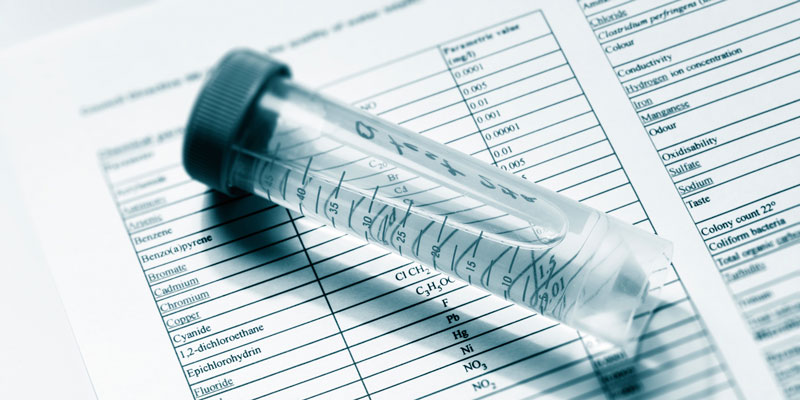Molecular-based Detection of Waterborne Pathogens: Cryptosporidium parvum
Principal Investigators - Hung Lee, Professor, University of Guelph and Jack Trevors, Professor, University of Guelph (2001-2004)

Challenge
Cryptosporidium parvum is an intestinal parasite that affects humans and other mammals, including several species of farm animals, such as calves and lambs. Propagating in the intestines of infected animals, the parasites transfer to new hosts by way of hard spores known as oocysts. Commonly found in fecal matter, the oocysts are often transmitted via water. For example, the presence of C. parvum in water supplies is thought to result from either human or animal fecal contamination. However, since the relationship between infection prevalence, disease incidence, and oocyst numbers is not well understood, the significance of small numbers of oocysts in drinking water remains uncertain.
Assessing the threat of waterborne Cryptosporidium is complicated by the dynamic nature of the parasite itself. Even when oocysts are found in drinking water, it is difficult to determine their source, viability, and infectivity towards humans. Further research is needed to develop sensitive methods for quantifying oocyst numbers in drinking water in order to establish a Cryptosporidium action level.
In this project, the development and assessment of novel methods for detecting and determining the viability and infectivity of oocysts were researched, which is essential for assessing the presence, prevalence and infectivity of pathogens in municipal water sources.
Project
The development of better methods to detect C. parvum involved two main areas of investigation. The first was aimed at developing a method to determine oocyst viability and infectivity, while the second involved the construction of specific recombinant antibodies (rAbs) against C. parvum.
To address the first objective, the team employed a specialized polymerase chain reaction (PCR), known as a most-probable-number (MPN) PCR. In molecular biology, PCR is used to amplify a particular DNA sequence by several orders of magnitude. With MPN-PCR, DNA templates of C. parvum oocysts were diluted serially prior to PCR reactions. However, reactions were only able to proceed when a template was present, thus allowing the researchers to assess the original concentration of template molecules.
The second objective involved the use of rAbs, which were first developed in the mid to late 1980s as a revolutionary method of selecting antibodies specific for anti-microbial residues and other antigens. The researchers constructed rAbs against C. parvum oocysts using the following approach:
- Immunizing mice and rabbits with C. parvum oocysts
- Generating antibody libraries to facilitate screening
- Screening antibody libraries to select the best two to four binding clones for further characterization
- Expressing selected clones
Following this approach, the researchers obtained two clones that were able to block infection by C. parvum oocysts, though, at high numbers, the rAbs appeared to cross-react with several other microorganisms.
Outputs
- Methods that can determine the viability and infectivity of C. parvum were transferred directly to industrial and government research partners for use in commercial and regulatory monitoring or research programs.
- Opportunities exist to license the project’s innovative technologies, including novel rAbs that can be used for the routine monitoring of C. parvum in municipal waters.
The project also resulted in several publications, of which a select few are listed below:
Refereed Papers
Pokorny, N.J., S.C. Weir, R.A. Carreno, J.T. Trevors & H. Lee (2002) Influence of temperature on Cryptosporidium parvum oocyst infectivity in river water samples as detected by tissue culture assay. Journal of Parasitology 88, 641-643.
Weir, S.C., N.J. Pokorny, R.A. Carreno, J.T. Trevors & H. Lee (2002) Efficacy of common laboratory disinfectants on the infectivity of Cryptosporidium parvum oocysts in cell culture. Applied and Environmental Microbiology 68, 2576-2579.
Yau, K.Y.F., H. Lee & J.C. Hall (2003) Emerging trends in the synthesis and improvement of hapten-specific recombinant antibodies. Biotechnology Advances 21, 599-637.
Carey, C.M., H. Lee & J.T. Trevors (2004) Biology, persistence and detection of Cryptosporidium parvum and Cryptosporidium hominis isolates. Water Research Water Research 38, 818-862.
Abstracts
Lee, H., J.T. Trevors & J.C. Hall (2003) Molecular-based detection of Cryptosporidium parvum. Oral presentation (made by N. Pokorny) at Canadian Water Network annual meeting. March 23-27 (St. John, New Brunswick).
Carey, C.M., L. England, N. Pokorny, N. Wilson, S.C. Weir, J.T. Trevors & H. Lee (2003) A most probable number (MPN) PCR method for the environmental detection of Cryptosporidium parvum and Cryptosporidium hominis. Poster presented at Canadian Water Network annual meeting. March 23-27 (St. John, New Brunswick).
Pokorny, N.J., J. Boulter, J.C. Hall, H. Lee & J.T. Trevors (2003) Construction of recombinant antibodies to Cryptosporidium parvum. Poster presented at Canadian Water Network annual meeting. March 23-27 (St. John, New Brunswick).
Outcomes
- Increased knowledge related to assessing the presence, prevalence and infectivity of pathogens in municipal water sources.
- The development of sensitive, rapid and cost effective methods to detect significant water-borne pathogens such as C. parvum in surface and groundwater will serve to safeguard our drinking water supplies and protect the general population against potential contaminations, producing an overall long-term effect of better public health and social well being.
- Since existing commercially available C. parvum antibodies generally lack specificity, the developed recombinant antibodies have an excellent potential to be licensed for use in water testing. Recombinant antibodies can also be used to purify oocysts from environmental water samples, as well as in the development of immunotherapeutic applications.




